Despite its reputation as a classic American Sunday dinner, pot roast originated in Europe, with roots in peasant cooking. It is made by slow-cooking a tough cut of beef, typically in a liquid such as broth or wine, until it becomes tender and flavorful. The origins of pot roast can be traced back to medieval times, when peasants would cook tough cuts of meat in a pot with vegetables and liquid to make a hearty and filling meal. Over time, the dish evolved and became a popular and comforting meal in many European countries, and eventually made its way to America, where it remains a beloved comfort food.
Best Cuts of Beef For Pot Roast
When it comes to pot roast, using the right cut of beef is key to achieving a tender and flavorful dish. Some of the best cuts of beef for pot roast include chuck roast, round roast, and brisket. These cuts of beef have the right balance of fat and connective tissue, which break down during the slow cooking process, resulting in a tender and flavorful dish. Chuck roast, also known as chuck shoulder roast, comes from the shoulder area of the cow and is a well-marbled cut of meat with plenty of fat and connective tissue. This makes it perfect for slow cooking methods like pot roast, as the fat and connective tissue break down during cooking, resulting in a tender and juicy dish. Round roast, also known as rump roast, is another good option for pot roast. It comes from the hindquarters of the cow and is a leaner cut of meat compared to chuck roast. While it may not be as tender as chuck roast, it is still a good choice for pot roast as the slow cooking method helps to break down the connective tissue and make the meat tender. Brisket is another great cut of beef for pot roast. It comes from the breast or lower chest of the cow and is known for its rich flavor and tenderness. Brisket is a tougher cut of meat, but the slow cooking method of pot roast helps to break down the connective tissue and make the meat tender and juicy.
Chuck Roast – tender, falls apart when finished and easily shreddedRound Roast (bottom round, top round) – lean and easy to sliceBeef Brisket – fattier option that gets super tender, but can still be sliced for serving
Vegetable Options
When making pot roast, there are many different vegetables that you can use to add flavor and nutrition to the dish. Some popular options include carrots, onions, potatoes, and celery. Carrots add a sweet and earthy flavor to the dish, and can be sliced and added to the pot along with the beef. Onions add depth and richness to the flavor of the pot roast, and can be sliced and added to the pot along with the beef. Potatoes add a starchy and satisfying element to the dish, and can be quartered and added to the pot along with the beef. Celery adds a refreshing and slightly bitter flavor to the dish, and can be sliced and added to the pot along with the beef. Other vegetables that can be used in pot roast include turnips, parsnips, and mushrooms.
Slow Cooker Instructions
Season the roast with salt and pepper as directed in step 2 of the recipe. Searing in oil in a skillet is an optional step. Searing your beef roast helps the fat render and seal in the moisture so it’s worth the extra time and dishes. But we also recognize that one of the benefits of using a slow cooker is a short prep time so that you can throw everything in. Place the seared or un-seared meat directly into a slow cooker. Add in all remaining ingredients and cook on low 8 hours. Pro Tip: It’s better to cook pot roast on the low setting rather than the high setting. Your meat will be tender and delicious every time.
Instant Pot Instructions
Follow this recipe as directed, but instead of searing and baking the roast in a large pot, you’ll do all of this in your pressure cooker. Sear the roast as directed in step 2 using the sear setting on your electric pressure cooker. Cook the garlic, and deglaze the pan with liquids, and add in vegetables. Cook on high pressure for 60 minutes, followed by a 15 minute natural release. Then, switch the release valve to the venting position. Remove lid once steam has stopped coming out. Pro Tip: the natural release portion of electric pressure cooking is an important step. We have found that if you release the pressure immediately after cooking, your beef may toughen up. Letting the pressure cooker sit for 15 minutes during the natural release stage produces a more tender result.
Related Recipes
If you like this recipe, you may be interested in these other classic Sunday dinner recipes:
Classic Braised Beef Short RibsHow to Roast ChickenEasy Baked Pork ChopsSunday Pork Roast
Δ Δ

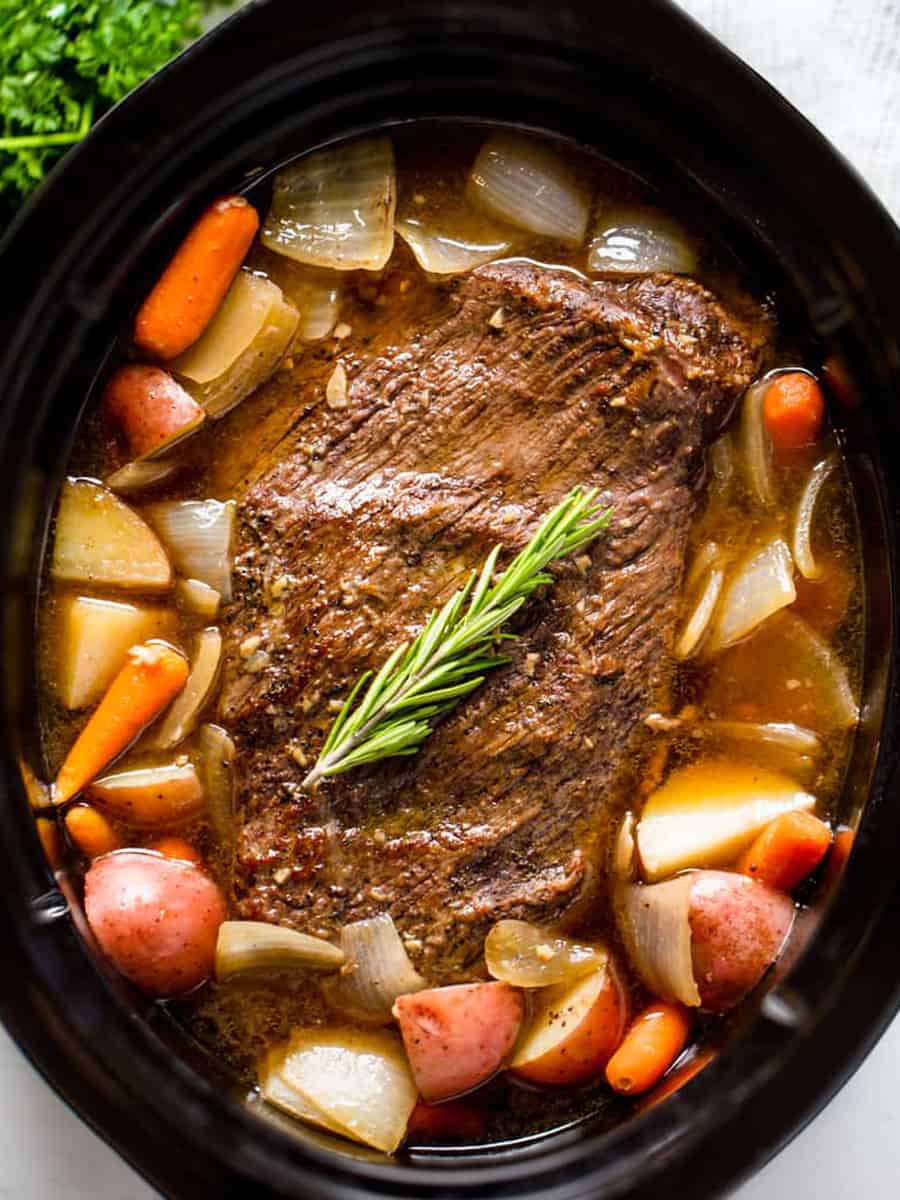
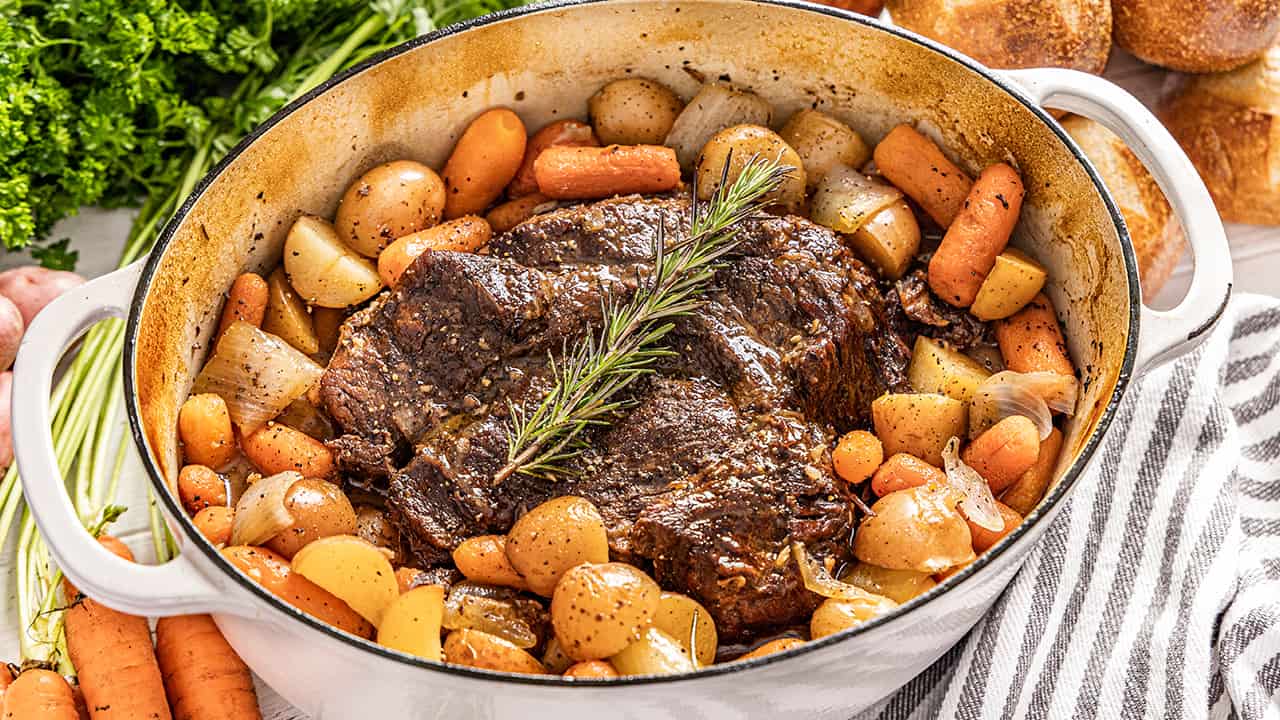
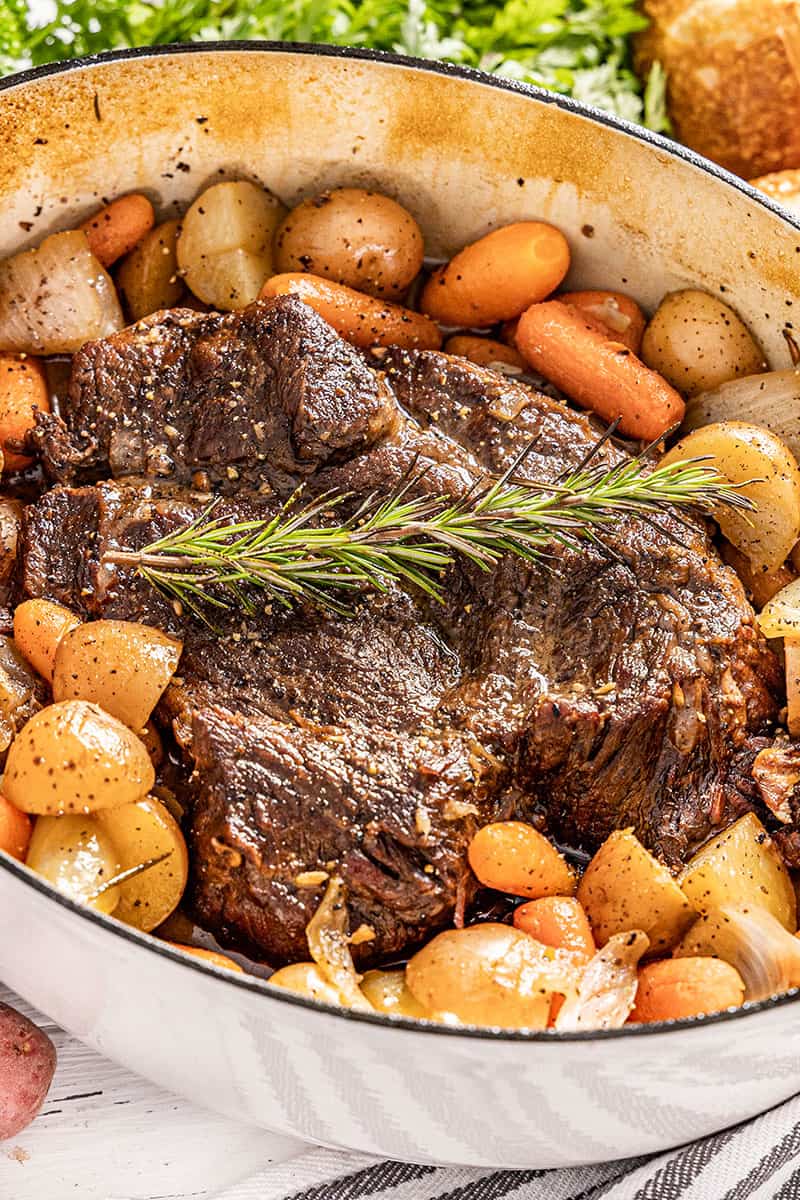
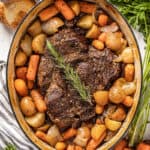
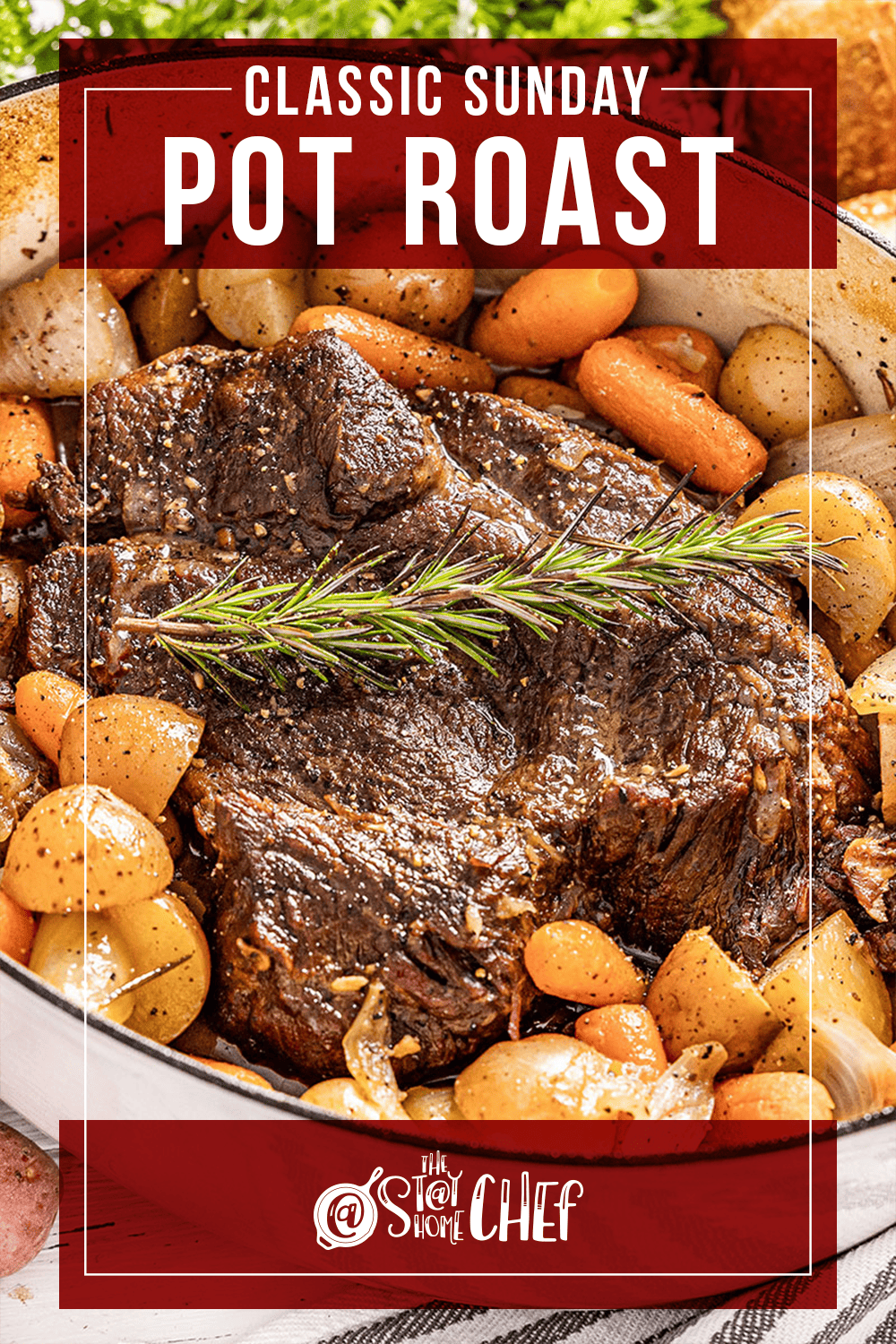

![]()